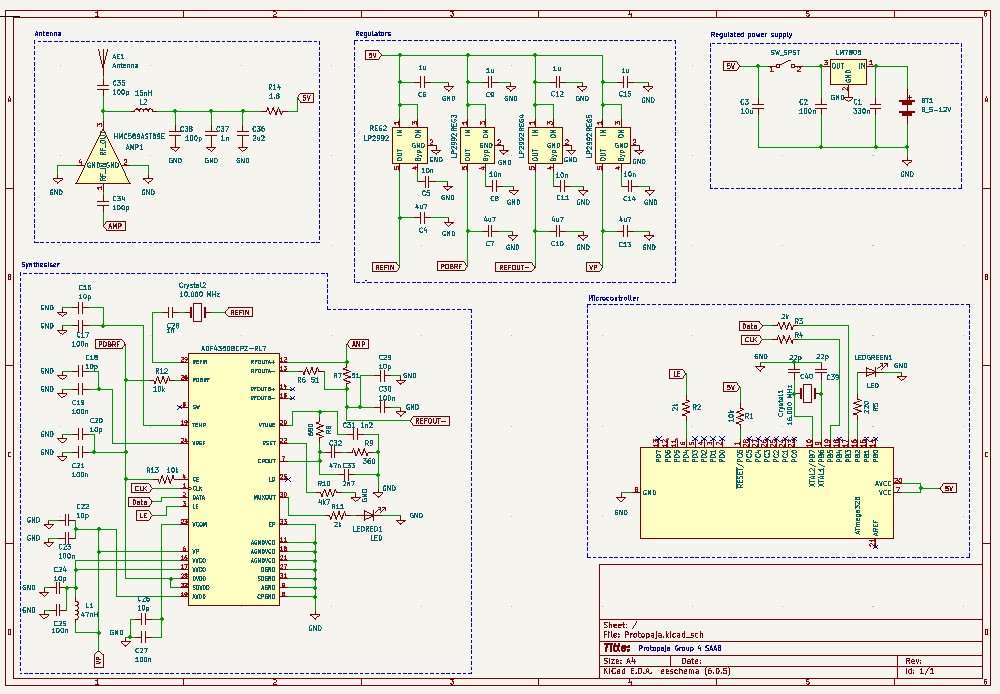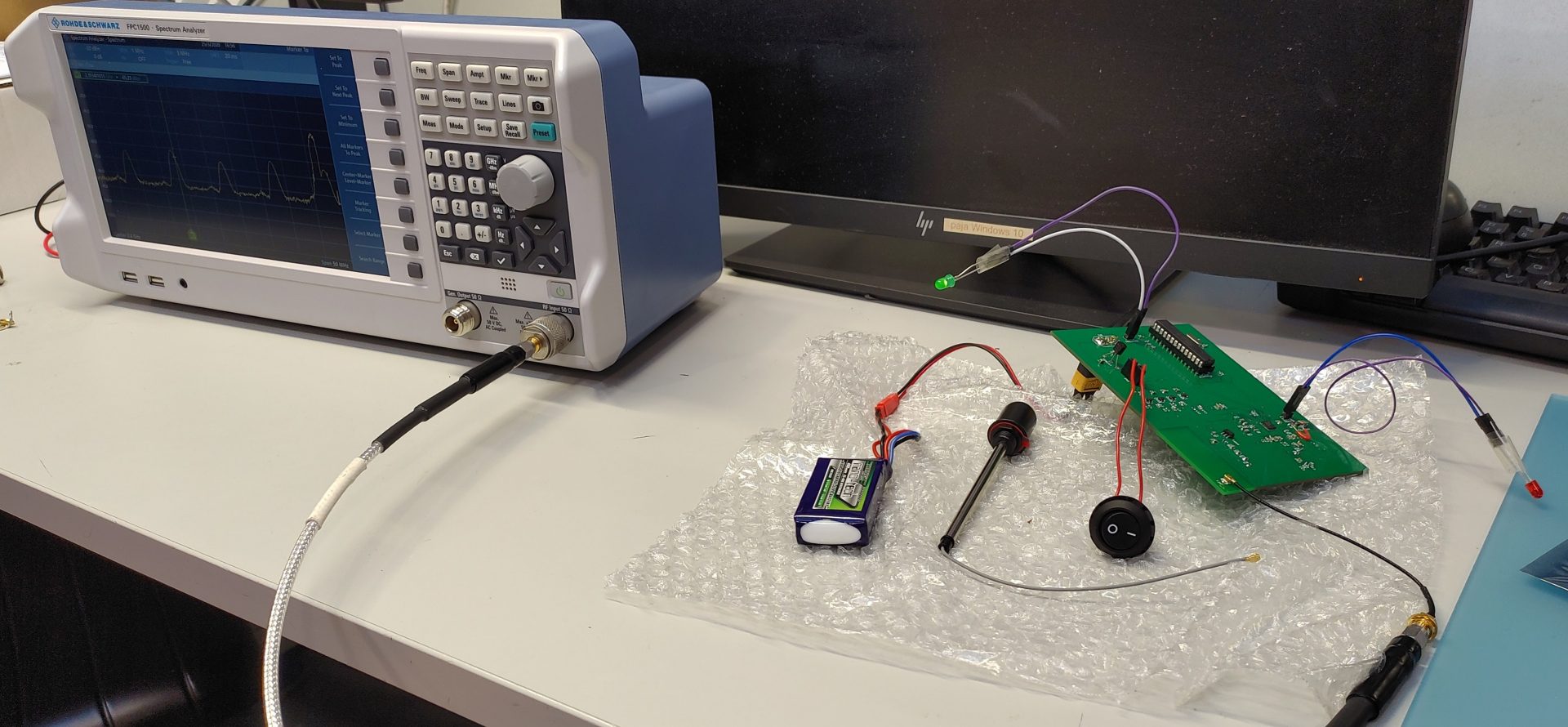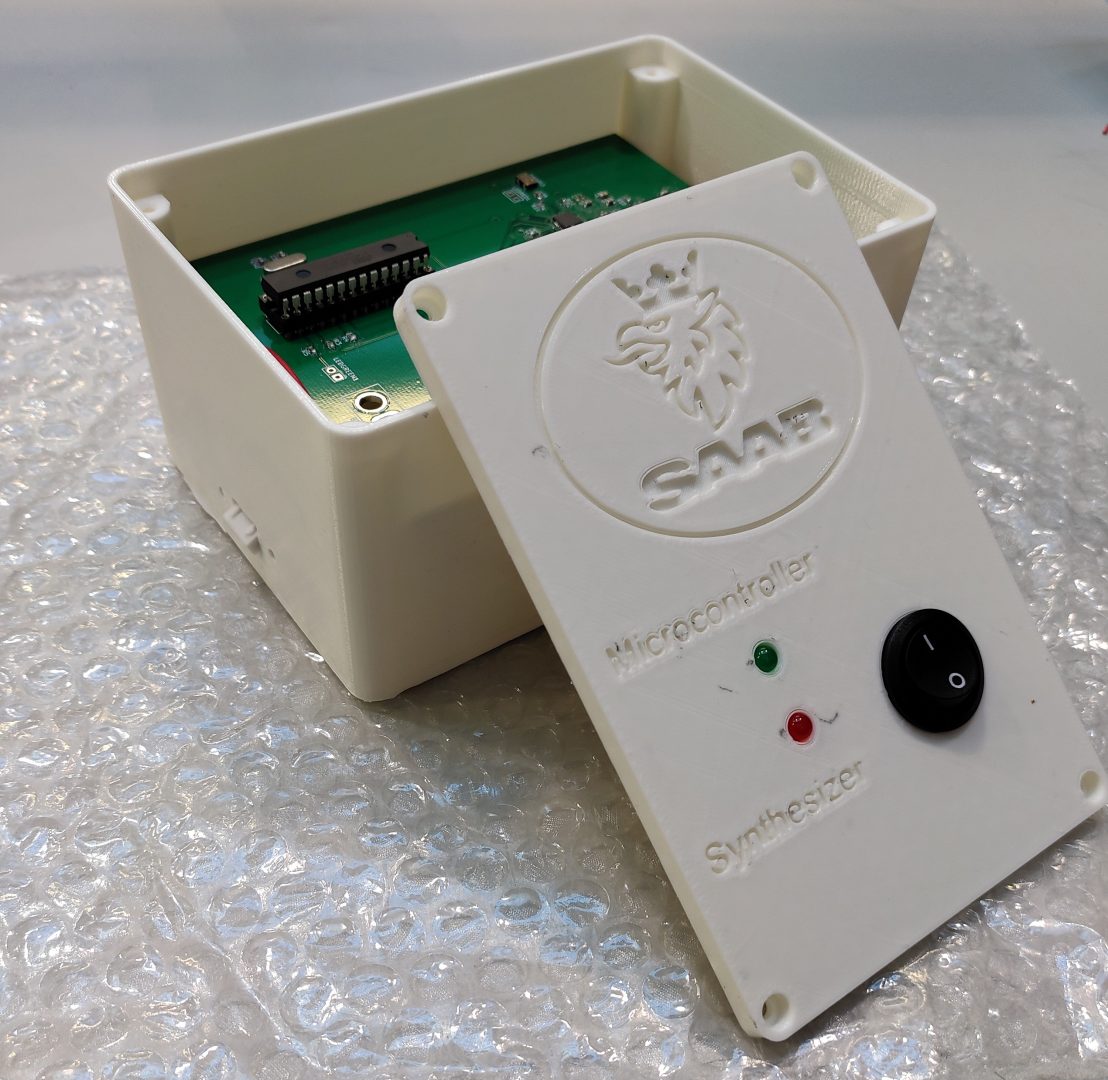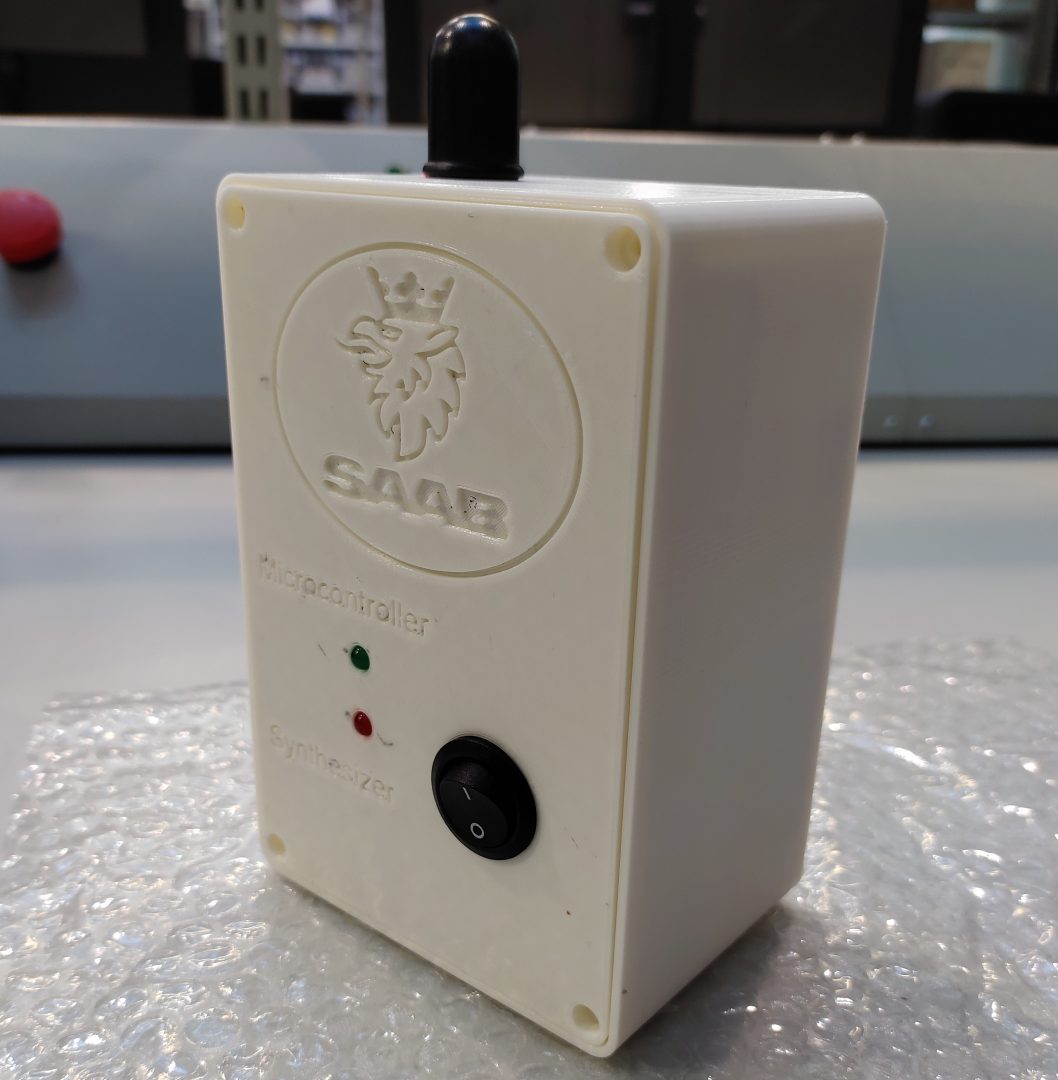Objective
SAAB recently developed the passive ‘Sirius Compact’ radar system for Electronic warfare. Now SAAB wants to develop a tool to test the limits and potential of the system. The tool is a handheld device that emits microwaves in a focused area and with a focused power. The device consists of a circuit board, an antenna, a power supply and a 3D printed box. The circuit board is a precisely designed embedded system with a microcontroller, synthesizer and amplifier among its functionalities. An antenna and a power supply are attached to the circuit board. The 3D printed box provides the desired protection for the components and enhances the appearance of the project.
The requisted characteristics:
- Power Level under 20dBm EIRP
- Frequency between 2-10GHz
- Continuous waveform with narrow bandwidth
From these charascteristics we started to develop a circuit for sending 2.4GHz frequency with transmission power of 19dBm EIRP.
Hardware
The circuit has few main components. These are the synthesizer, microcontroller and antenna. The fundamental idea is that the microcontroller has our program which controls the synthesizer. The synthesizer then creates a signal which is made on the basis of stored values in the program. This singal is then sent to the antenna to be transmitted. To support these components we have used a large number of components like voltage regulators, capacitors, inductors and resistors. Below you can see our Schematics and PCB design.


Software
The code sketch controls the circuit by using a function that writes binary values to the synthesizer registers. These predefined values are uploaded to the microcontroller which sends them further to the synthesizer. These binary values are in hexadecimal form which could be seen on our repository on GitHub.
Results
We created a microwave transmitter which transmits sine waves with a determined frequency of 2.4 GHz. Our goal was to reach transmission power from 16 to 19 dBm EIRP. Due to lack of time we did not have time to repair a mismatched impedance caused by the tracewidth of the PCB. This caused our final prototype to have signal reflection and therefore the powerlevels were much lower than anticipated. We measured the circuit transmitting -16dBm absolute power. Other improvements should be to impliment narrow band pass filter after the amplifier to filter its harmonic distortion.



Links:
- Source code: https://github.com/tomrailio/Protopaja-SAAB-22
- Final report: https://docs.google.com/document/d/13Xw1yjMfUVmYmt_XU9kArV4YAIjmNbtooxjbMoWTdDU/edit?usp=sharing
Team:
- Miikka Mäki. Aalto University, Electrical Engineering.
- Tuan Nguyen. Aalto University, Digital Systems and Design.
- Tom Railio. Aalto University, BIZ Doctoral Program.
Licensing: MIT License.

